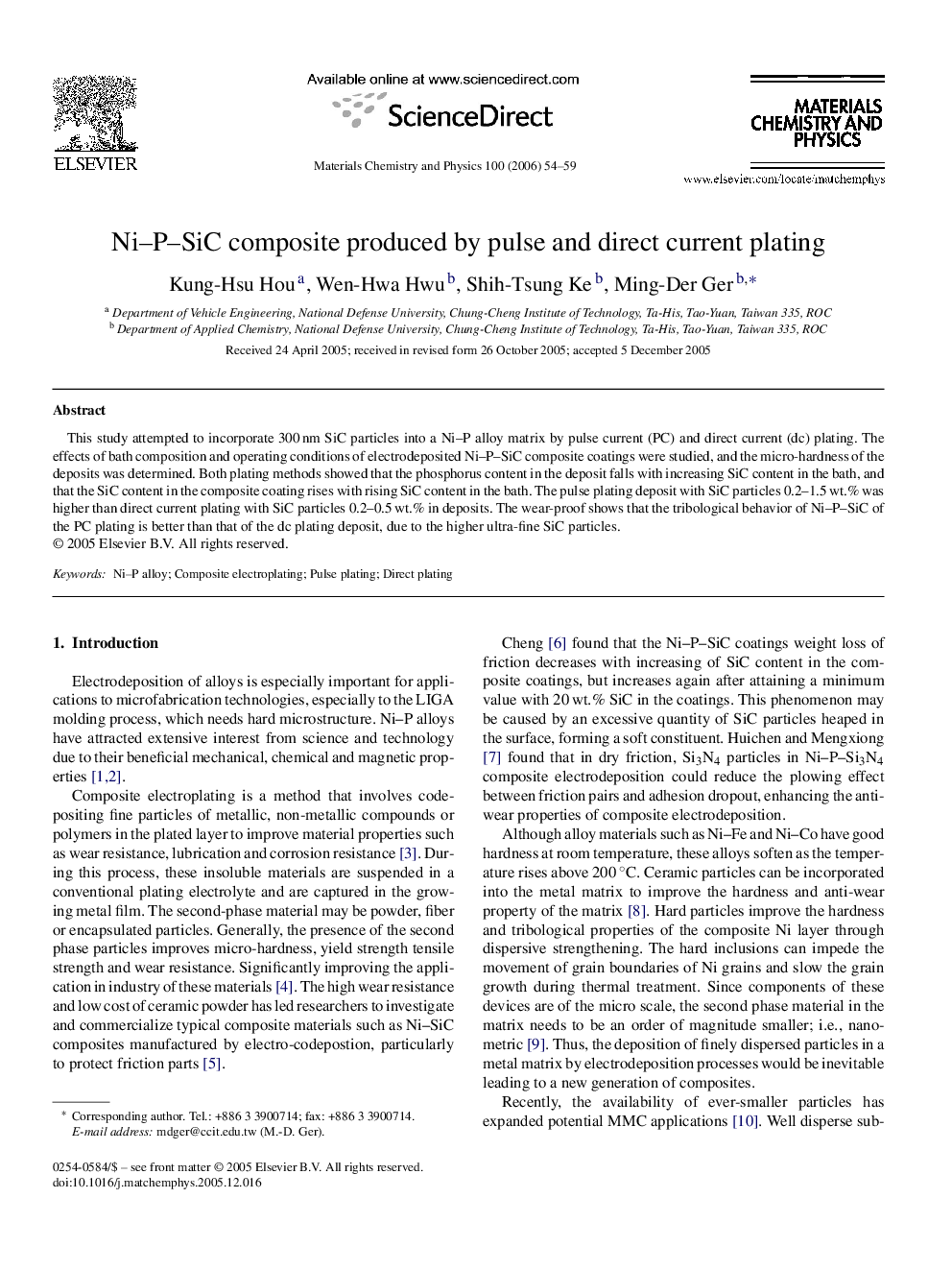| Article ID | Journal | Published Year | Pages | File Type |
|---|---|---|---|---|
| 1527983 | Materials Chemistry and Physics | 2006 | 6 Pages |
This study attempted to incorporate 300 nm SiC particles into a Ni–P alloy matrix by pulse current (PC) and direct current (dc) plating. The effects of bath composition and operating conditions of electrodeposited Ni–P–SiC composite coatings were studied, and the micro-hardness of the deposits was determined. Both plating methods showed that the phosphorus content in the deposit falls with increasing SiC content in the bath, and that the SiC content in the composite coating rises with rising SiC content in the bath. The pulse plating deposit with SiC particles 0.2–1.5 wt.% was higher than direct current plating with SiC particles 0.2–0.5 wt.% in deposits. The wear-proof shows that the tribological behavior of Ni–P–SiC of the PC plating is better than that of the dc plating deposit, due to the higher ultra-fine SiC particles.
